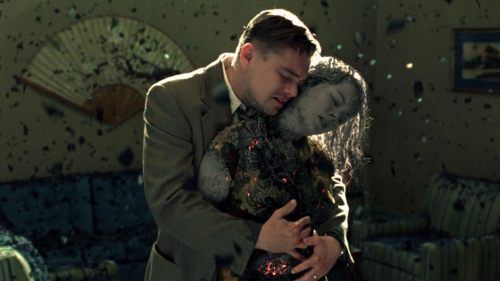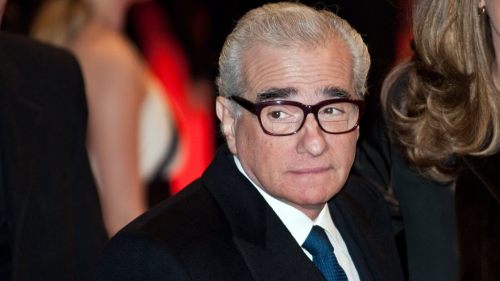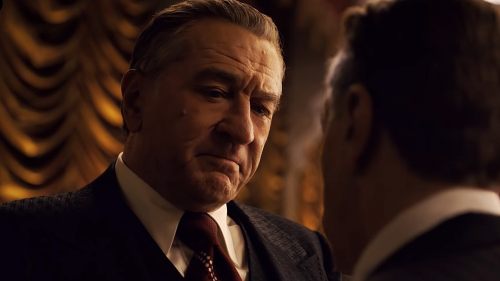A Brand New Start Of It: Scorsese’s NEW YORK, NEW YORK
Coming off his excellent The Irishman, it’s good to be reminded that Martin Scorsese makes more than just the gritty, masculine crime films that most people associate with his name. UK-based distributor Park Circus is serving us that reminder, with their new restoration of Scorsese’s first and only musical, New York, New York. The 1977 musical-drama is among the most underseen of the director’s works, despite originating the famous tune that Liza Minelli and Frank Sinatra turned into the Empire City’s unofficial anthem.
Having viewed the new restoration, I can see a few reasons why New York, New York hasn’t prospered as well as its theme song, though the film is definitely worth a look for no reason other than to watch Scorsese stretch his wings as a maximalist. After Taxi Driver, Scorsese wanted to break away from naturalism, so he deliberately designed this film in the mold of classical musicals, complete with exaggerated sets, extravagant musical numbers, and a figurative sense of continuity. It’s a very committed attempt to recreate the splendor of 1940s Hollywood, yet Scorsese’s sensibilities as a New Hollywood deconstructionist aren’t entirely absent.
With this parable of a jazz singer and a saxophonist, Scorsese sets in his sights the question of art’s purpose. New York, New York examines the kinds of lives artists lead and, in the process, seeks to undress the myths of talent and stardom that inform the way we view popular musicians and “genius” auteurs alike.
In the film’s opening sequence—which begins with a colorful crane shot featuring hundreds of reveling extras—Scorsese chooses to depict the V-J Day celebrations as a lowly, lascivious endeavor. Our introduction to Robert De Niro’s Jimmy Doyle plays out like the backstory of “V-J Day in Times Square,” with De Niro’s self-absorbed saxophonist forcing himself into the company of various women want nothing to do with him. One of the women is USO singer Francine Evans (Liza Minelli)—our other protagonist—who unfortunately becomes the main object of Jimmy’s infatuations despite her repeated rejections of him. This is the genesis of their years-long relationship and musical collaboration that follows.
The early interactions between Jimmy and Francine straddle the line between cringe comedy meet-cute and squirm-inducing sexual harassment depiction, and it’s one of New York, New York’s major missteps. While the writing of the film doesn’t hold back on or sugarcoat Jimmy’s abusiveness, De Niro’s vaudeville-like improvisation can’t help but take charge of every scene he’s in. It makes Jimmy’s violations come off as quirky speedbumps instead of the shocking red flags they need to be in order for the film’s genre deconstruction to really come through. Minelli does her best to maintain realism in the face of her co-star’s cartoon tempestuousness, but it’s not enough to save the tone of these scenes.
In fact, the central romance of the movie is so ambiguous in its sincerity that it might have been a sore point for many upon release. Fans of the classical romances New York, New York aesthetically evokes were probably turned off by the brazen toxicity of Jimmy’s character, while audiences looking for more of the ‘70s disillusionment Scorsese cut his teeth on likely found Francine’s melodized devotion to Jimmy sappy and surface-level.
Even though I have reservations about New York, New York’s execution, it’s still interesting to see a film that’s committed to rebuilding classic musical iconography and archetypes for the purpose of reinvestigating them. It’s a very different approach from the similarly jazz-oriented La La Land, which although being made much more recently and by a younger filmmaker, was still way too beholden to the films it was inspired by to say something substantive about art, music, or filmmaking.
New York, New York is of a piece with Scorsese’s other narrative film about the romantic and professional struggles of a musician, Alice Doesn’t Live Here Anymore, in that both films recognize the preservative and restorative value of song while falling short of endorsing performance as a substitute for daily living. In New York, New York’s case, we literally get to witness the (fictionalized) creation of the song that would become synonymous with America’s most famous city, yet that element is confined to the margins of the story until Minelli’s showstopping performance at the film’s conclusion.
Despite the elaborate presentation and pop mythological undertones, Scorsese is still concerned with the humans of his swing era New York City. In this way, New York, New York doesn’t really function as a conventional musical; almost all of the musical numbers are diegetic, and the moments that are not seem almost like interruptions. What stands out about the movie’s musical elements (along with the film’s two-and-a-half-hour runtime) is the sense of place it creates. Once you accept the movie for its excesses, it’s easy to feel like you’re living through New York jazz history. And at that point, the music speaks for itself.
Visit Park Circus’s website to enquire about or find local showtimes of the restored New York, New York.



